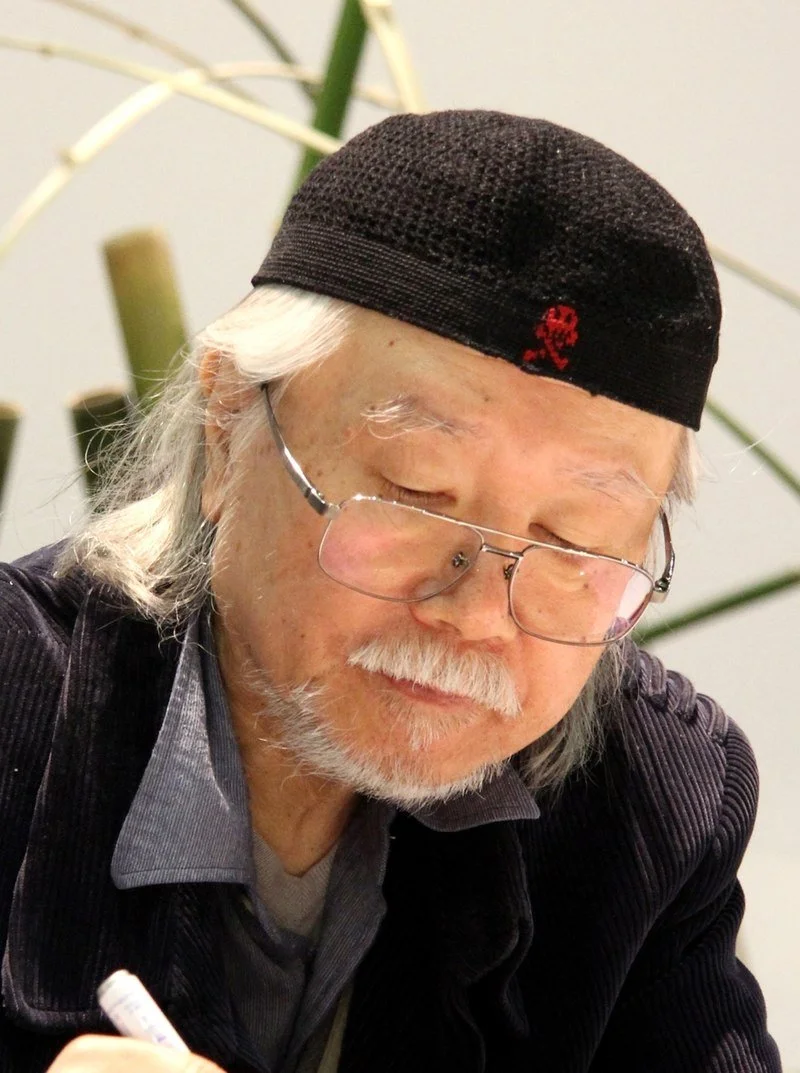Leiji Matsumoto
Leiji Matsumoto, a pioneering Japanese manga artist and animator, is celebrated for his epic space operas and tales blending science fiction, romance, and philosophical themes. His works often feature vast, melancholic universes, enigmatic characters, and a distinctive retro-futuristic aesthetic. Below is an overview of his most influential manga:
Space Battleship Yamato (Uchuu Senkan Yamato) (1974–1975)
A landmark in Japanese sci-fi, this series follows the rebuilt Yamato, a World War II battleship transformed into a spaceship, as it journeys across the cosmos to save Earth from extinction. It explores themes of survival, sacrifice, and the resilience of humanity. The manga, written by Matsumoto and based on the anime he co-created, laid the foundation for the "space opera" genre in anime and manga.
Galaxy Express 999 (Ginga Tetsudou 999) (1977–1981)
This acclaimed series tells the story of Tetsuro Hoshino, a young boy who boards the titular interstellar train to seek a mechanical body that grants immortality. Alongside the mysterious Maetel, Tetsuro travels to distant planets, each representing unique aspects of human struggles and desires. The series combines emotional storytelling with a reflection on the cost of progress and the nature of humanity. It became a massive cultural phenomenon, spawning several anime adaptations and movies.
Captain Harlock (Uchuu Kaizoku Captain Harlock) (1977–1979)
One of Matsumoto's most iconic characters, Captain Harlock is a space pirate who rebels against a corrupt and apathetic Earth government. Along with his loyal crew aboard the spaceship Arcadia, Harlock fights for freedom and justice in the universe. The series is celebrated for its themes of individuality, defiance, and heroism against tyranny, as well as its dramatic visuals.
Queen Emeraldas (1978–1983)
This spin-off from Captain Harlock focuses on the enigmatic Emeraldas, a fearless female space pirate. The manga delves into her backstory, her tragic past, and her quest for freedom in the boundless reaches of space. With its strong, independent protagonist and haunting atmosphere, it is a standout in Matsumoto's oeuvre.
Interstella 5555 (2003)
In collaboration with the French electronic music duo Daft Punk, Matsumoto created this manga and accompanying animated film. It narrates the kidnapping of an intergalactic band and their rescue, blending sci-fi storytelling with a musical experience. While unconventional in format, it showcases Matsumoto's storytelling versatility and creative synergy with other media.
Themes and Legacy
Leiji Matsumoto's works are defined by their exploration of loneliness, the search for purpose, and the enduring human spirit. His sprawling space operas and poignant narratives have had a profound impact on sci-fi in manga and anime, inspiring generations of creators. His art style, with its striking use of elongated characters and melancholic imagery, has become iconic. Matsumoto's contributions to the medium continue to resonate as timeless tales of adventure, humanity, and hope among the stars.
